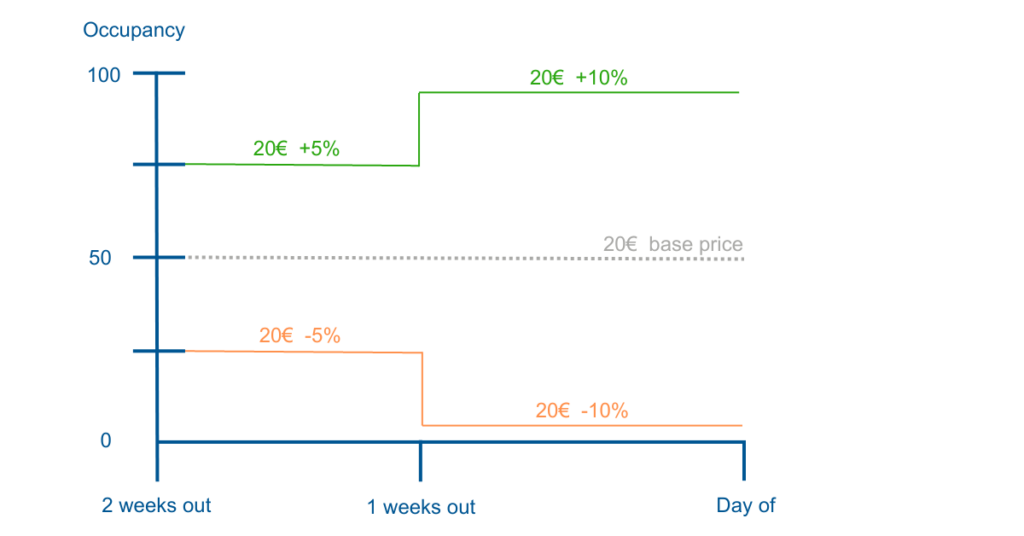Is your tour or transportation business ready to do away with fixed pricing and start adjusting to reflect the economy, availability, demand, special events, and simply optimising profits? Then it’s time to apply the competitive advantage of dynamic price modelling to your operations.
Imagine for a moment that you are a hop-on-hop-off tour operator in the busy season and you are nearing your capacity, you could add 5% to the ticket price for supply and demand. You know your seats are already almost full, so from here any seat you sell is optimising profits. (see visual below)
A few ways to incorporate dynamic pricing, based on…
- Demand
- Capacity
- Ticket Type
- Time of Day
- Annual Seasonality
- Weather
- Advanced Booking Thresholds
- Special Events/ Holidays
- Competitor Pricing
- Group Size
- Promotions
- Bundling
Palisis has been offering variable pricing options inside of our solution, which is starting this strategic shift for operators. The adoption of our dynamic pricing rules across customers suggests that the tours and activities segment is ready to implement this pricing model of fluctuating price points that target different purchasers at various times.
Where to start with dynamic pricing?
Let’s think about an off-season and weekday pricing strategy, typically low-demand timeframes, to begin sampling and offer pricing incentives to travellers. The goal here is to reduce empty seats, drive profits, reward early bookings, and empower the team to make intelligent forecasts whilst continuing to meet customer expectations.
Advanced bookings and seasonal price breaks are something that travellers have come to expect. Still, drastic price variations from day to day for no apparent reason can leave a wrong impression and cause doubt about the perceived value. When setting new pricing, be sensible.
Our last article discussed how dynamic pricing is not only for e-commerce websites. However, this is one of the most plausible avenues to trial, test, and tweak. But the next step will be granting price changes across all channels and distribution.
From our desktop webshop, Palisis customers can access this feature and start building the pricing blueprint for testing and implementation. Everything comes back to occupancy and maximising capacity with control over the flow and ticket types.
Below is a graphical representation of how the prices can be configured to change over time based on the criteria and thresholds set forth.

The long-term benefits of setting up the pricing model correctly and strategically from the outset give control to the operator for optimising profits and access to fine-tuning the prices to your customer’s perceived value.
OTAs to accommodate dynamic pricing
We are preparing for the time when online travel agencies (OTAs) start to accommodate dynamic pricing. The hurdles we will need to cross include—what will these updated contracts look like with the OTAs, how will price parity play a role, and what is the directional flow of data?
Our team is in constant communication with our OTA partners for building, designing, and testing new features—rest assured, this topic is at the centre of development conversations.
About Palisis
Palisis is the leading technology provider of comprehensive sales and operations solutions for tourism and transportation businesses worldwide. Due to its rich experience, specific market knowledge, consumer centricity and process orientation, Palisis is the industry technology pacemaker. As a full-service provider, Palisis supports your business processes and operational procedures with the most efficient and reliable solution available. Today, Palisis solutions are successfully and effectively used by customers in over 100 countries around the globe.

 Copy link
Copy link

